Sculpture of young boy highlights Lanier work in Kourion this summer
Kim Chaudoin |
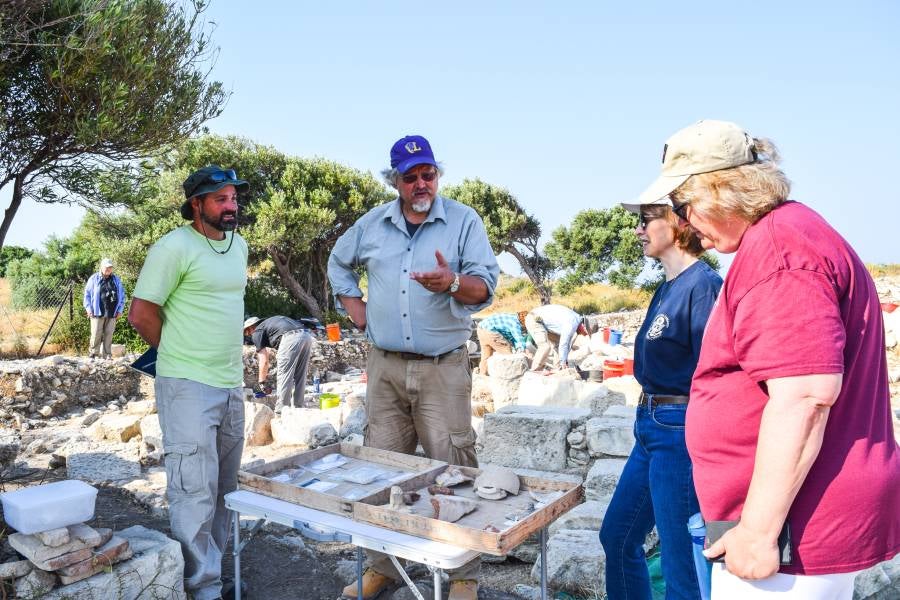
Summer has been a busy time for students and faculty in Lipscomb’s Lanier Center for Archaeology with a number of field and research projects over the last few months.
The Kourion Urban Space Project (KUSP) was particularly fruitful as the 2022 excavation season yielded a significant and unusual discovery last month.
Thomas Davis, assistant director of the Lanier Center for Archaeology, is the principal investigator. Davis and Laura A. Swantek of Arizona State University serve as project directors. They along with Lipscomb students and a team of archaeologists working at Kourion last month found a sculpture of a young boy lying face down on a mosaic floor and covered by large, tumbled wall stones in the remains of one of the buildings being excavated there.
Since 2013, KUSP – whose partners include the Australian Institute of Archaeology, the University of Cyprus, the Cyprus University of Technology and the Western Sovereign Base Area Archaeological Society — has been excavating the remains of a large building (Building 4) just west of the Earthquake House on the Kourion acropolis.
The excavation of Building 4 is part of a long-term archaeological investigation of the ancient city of Kourion that includes planning of the natural and cultural environment, continued work on materials from the Earthquake House, investigation of soil micromorphology to better understand the history of earthquakes in the area, mapping of the Kourion water system and urban plan, and study of wealth inequality and social dynamics, during the Early through Late Roman period. KUSP also investigates the social and economic impacts of natural disasters on human social systems.
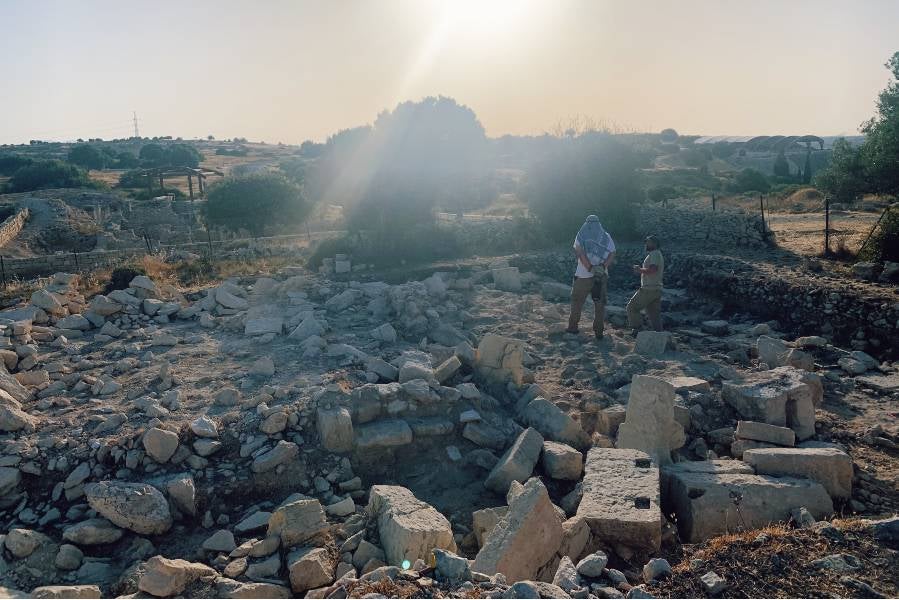
“This is an extraordinary find,” says Davis. “An almost complete sculpture is extremely rare in an archaeological excavation of a domestic setting. I have never found one in 40 years of excavation. It is marvelous for our students to have this experience.”
A sculpture of a young boy was found lying face down on a mosaic floor and covered by large, tumbled wall stones in the westernmost excavated room of Building 4. The sculpture is broken- missing the right hand, the left leg, and both feet. He has wavy hair arranged in a top-knot, and a slightly bulging belly complete with a belly button. In his left hand he holds a bird, most likely a duck.
This sculpture is similar to one that is currently in the Vatican Museum which is thought to be a Roman variation of a 2nd century BCE original. This variation was popular during the 2nd century CE, and its presence along with similarly dated pottery found resting on the floor suggests that Building 4 was in use during this time.
Kirsten Flake, who is pursuing her Ph.D. in Near Eastern Archaeology with an emphasis in Late Antique period mosaics, was part of the team working on this project this summer.
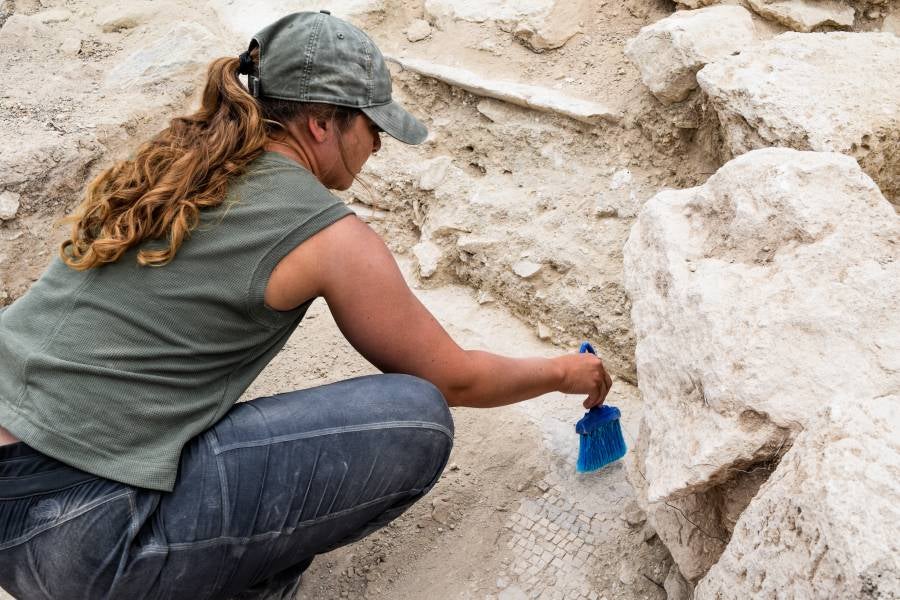
Kirsten Flake at the excavation site in Kourion.
“It was very exciting to find the statue. The head was the first part of the statue to be found and it was face down,” says Flake, of Shreveport, Louisiana. “As we excavated the rest of the statue the anticipation grew because you didn't know who or what it was a statue of and if it was going to be just a fragment or a whole statue. It was very surprising to have excavated the whole statue and to find it was mostly intact. Many students had their theories on who it was a statue of until we could get it out of the ground and flipped over.”
Ph.D. student Rebekah Ross is a founding member of the Kourion Urban Space Project. This was her seventh field season, and she said it was “a great, if not the best, field season I've ever been a part of. All of our students worked incredibly hard,” she says.

Rebekah Ross was one of two Lipscomb students to find the statue.
Ross, who is pursuing her doctorate in archaeology with an emphasis on the late Roman/early Byzantine period with particular focus on ancient glass and the use of exterior light in the ancient world, served as the space supervisor for the team that found the statue. Ross and her team opened the space to trace the mosaic floor that Swantek found on the east side of the space.
Lipscomb student Evie Wilson, Ross and team member Steve Huffman were assigned the task of continuing to trace this floor working from east to west.
“We made several big pick passes to remove the overburden and had switched to hand picks, trowels, brushes and dustpans because we were about five to 10 centimeters from the mosaic floor and we didn't want to break it,” explains Ross. “So we were working slowly and carefully.”
Ross says the majority of the stones that the team finds at Kourion are rough, irregularly-shaped and gritty limestones, but occasionally they find smooth, round and uniform igneous river stones brought by Kourion inhabitants from the Kouris River.
Wilson and Ross were tracing the floor with hand picks and trowels when they came upon a “weird rock.”
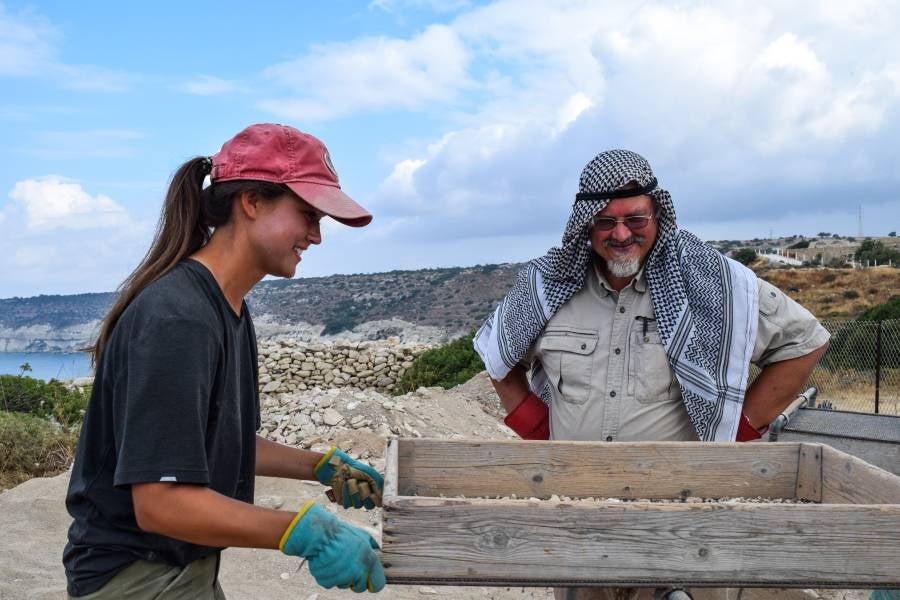
“It was an unusual rock. It felt smooth and uniform like a river rock, except for that weird dip in the middle,” she recalls. “I encouraged Evie to keep working from the ‘known to the unknown,’ which is a typical archaeological practice, and we'll figure it out."
So Wilson continued working and sweeping sand away from the rock, when she summoned Ross again.
"I went over and traced with my fingers a smooth but bumpy surface. I quickly realized that it wasn’t a river rock, but hair. So we kept cleaning the soil away from the hair and we figured out that the ‘weird river rock’ was in fact the shoulders and shoulder blades of the statue,” says Ross. “We cleaned a little more and by wiggling our fingers under the statue we could feel the cheek, eye and ear of the statue. And that's how Evie Wilson and I found the statue.”
Flake has been a part of six excavation seasons, including two at Tell es-Safi (Biblical Gath) in Israel, one season at Gezer in Israel, two seasons at Kourion in Cyprus and one season at Tel Burna in Israel. She says the excavations at Kourion this summer were unique because the team had several major finds including the statue as well as fragments of a VERY rare glass cage cup, and a mosaic floor.
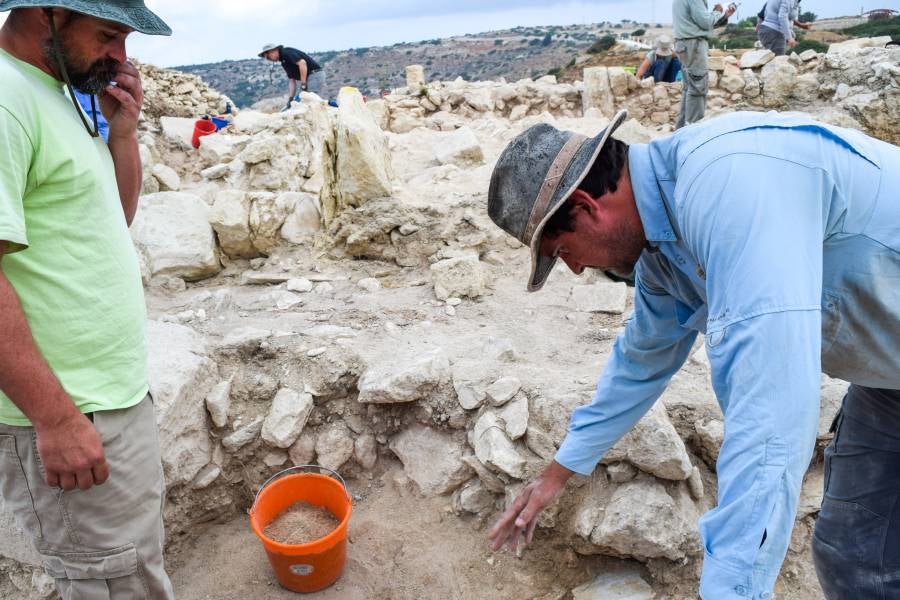
"This was a great find for the Kourion project. This season was supposed to have taken place in 2020, but the LCA (formerly the Tandy Institute for Archaeology) had its academic and research programs discontinued,” says Steven Ortiz, director of the Lanier Center. “Thanks to the vision and generous support of Mark and Becky Lanier, two years later all of our research projects are up and running. This was a great summer season to kick off the research of the LCA in our new home here at Lipscomb. My colleague has been leading this field project and training our students for several seasons. It is great to see their efforts rewarded with a phenomenal find."
Kourion is located at Episkopi Bay, on the southwest coast of Cyprus. While it has settlements from the Neolithic to the Medieval periods, the emphasis of the excavation project is on the later Roman and Early Byzantine Periods, the world of the New Testament and the Early Church.
According to Davis, the fourth century AD marked a watershed change for the development of Cyprus’ cultural identity. Transformed by both internal and external factors, the Cyprus that emerged by 400 AD is recognizably the forerunner of modern Cyprus. During the late 4th century AD, a massive earthquake occurred off the southwest coast of Cyprus, which devastated the cities located on this part of the island. One of the cities most affected by this catastrophic event was Kourion, which appears to have been almost completely abandoned for a short period of time, before being reoccupied at the beginning of the early 5th century AD.
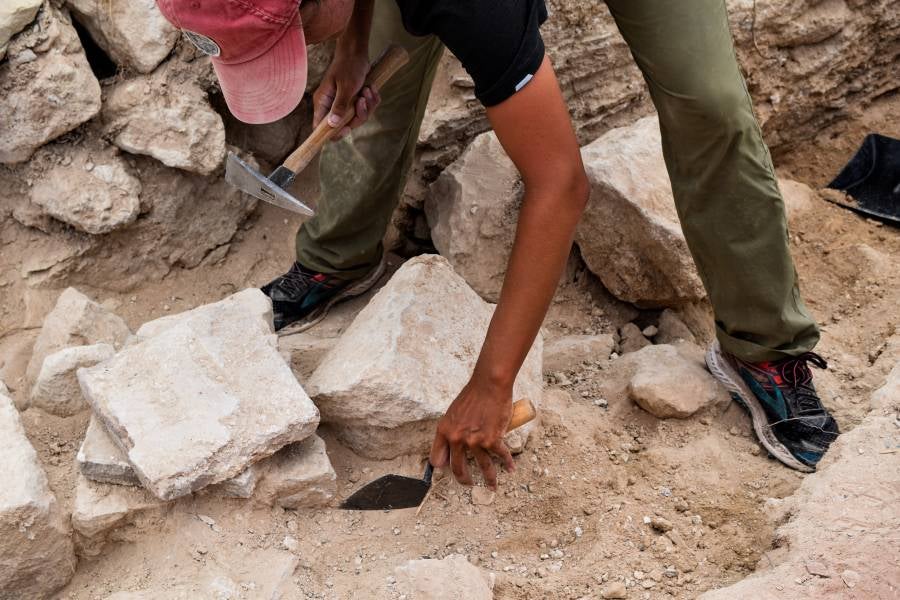
Despite this reoccupation, the site never completely recovered, resulting in a large portion remaining abandoned leading to the preservation in the archaeological record of the destruction. This was made manifest in the excavations led by David Soren of the University of Arizona from 1984-1987. Soren unearthed a domestic structure which came to be known as the Earthquake House.
Davis, the principal investigator of the current project, served as field director of those excavations in the first two seasons. The excavations confirmed the destruction of this building by the earthquake and its lack of subsequent disturbance by revealing not only a complete artifact assemblage in situ, but also the remains of five victims that had been killed during the event. Such sudden and complete destruction makes Kourion one of only a few sites around the ancient Mediterranean to provide archaeologists with the opportunity to analyze artifact assemblages in the context of their daily use rather than after they have been discarded.
Flake says field experience is an important part of archaeological studies.
“As students of archaeology, we spend so much time reading about ancient peoples and learning archaeological methods in the classroom, being in the field brings all of that knowledge to life,” says Flake. “It is one thing to study a topic and know all the literature, but it is so much more valuable to be able to quite literally put your hands in history.”
“To learn the archaeological methods by physically doing them, to excavate artifacts that you have only seen pictures of and be able to touch them is a next level of education,” she continues. “I study the Late Antique period and this project allows me to walk directly into history as we excavate a Late Antique building.”
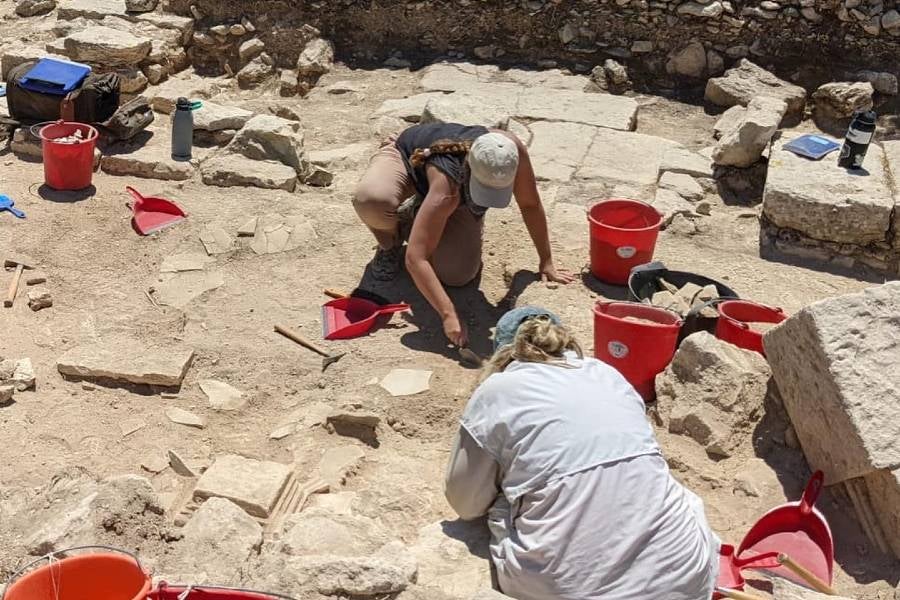
Ross agrees.
“When you read a book and you look at an archaeological diagram of the walls and decorations of a church, they don't always make a lot of sense or they aren't ‘real’ but when you arrive at a site and you walk it with that map in hand and you enter a church how the original church members would have, it just clicks and you get a glimpse of the reality of the past and the past comes to life,” she explains. “When you read about a building being four meters tall, it's just a number because scale is hard to see and understand in books. But when you stand next to a wall and it towers over you it just clicks. It makes me realize that ancient people and cultures are no different than we are. Technology has changed but people don't.”
Lipscomb’s Lanier Center for Archaeology launched in January 2021. The center offers a Doctor of Philosophy in Archaeology of the Ancient Near East and a Master of Arts in Archaeology and Biblical Studies and field research projects, including four active projects: Tel Gezer excavation and publication project, Israel; Kourion Urban Space project, Cyprus; Karnak epigraphic survey, Egypt; and the Tel Burna excavation project, Israel. The center is housed in Lipscomb’s College of Liberal Arts & Sciences. It also brings extensive resources and artifacts to the university.
“My experience with Lanier Center has been wonderful,” says Flake. “The students are very close and lean on one another to study together and exchange ideas. The program is unique as the students are not in competition but must rely on one another to make it through. Our professors are also very involved and definitely care for each of their students, not just academically, but personally as well.”
Learn more at www.lipscomb.edu/arts-sciences/lanier-center.